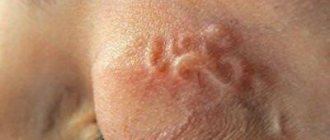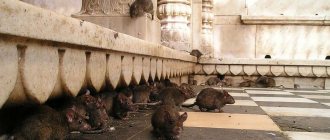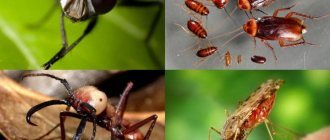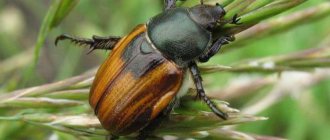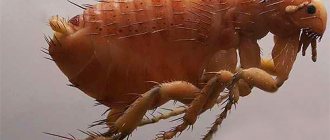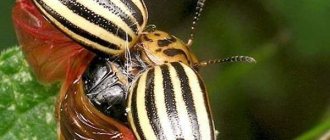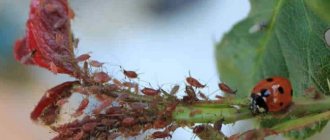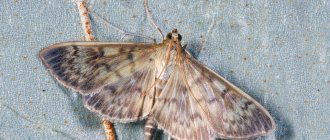In the body of a nonspecific carrier, the pathogen, as a rule, does not reproduce, but is capable of developing. Transfer of the pathogen by this carrier can occur immediately after he received it from a sick animal, person or from the environment and occurs for a short time until the pathogen remains on the legs, integument, or proboscis of insects, in their saliva, or intestines.
Typical mechanical vectors are primarily houseflies.
Synanthropic flies (Diptera, Brachycera-Cyclorrhapha)
The housefly Musca domestica L. (family of true flies (Muscidae)) is one of the main mechanical carriers of pathogens of various infections. This is facilitated by: the close connection of this species with humans, the feeding of flies on various substrates, including garbage, the extreme mobility of flies, their huge numbers and the presence on the body of these insects of a large number of hairs and bristles, facilitating the transfer of pathogens. Up to 44 species of microorganisms were found on flies caught in natural conditions. Thus, in the intestines and on the integument, flies carry pathogens of intestinal infections, primarily cholera , as well as salmonellosis, Flexner's dysentery, typhoid fever, paratyphoid B, diphtheria, tuberculosis, leprosy, anthrax, polio, etc. The shelf life of microorganisms in the intestines and on the integument of flies ranges from several hours to several days and even weeks. Therefore, flies are capable of transmitting cysts and vegetative forms of protozoa, as well as helminth eggs.It is also known that housefly larvae can cause random and facultative myiases in humans.
Sinatropic fly
During 8 months of 2007, 47,211 cases of cholera were identified in the world, of which 1,026 were fatal. In 2010-2011 cases of cholera were recorded on the Azov coast of Ukraine. In Russia, the epidemiological situation regarding cholera remains unstable due to the release of non-toxigenic Vibrio cholerae from surface water bodies and wastewater.
CARRIERS
Vectors
- invertebrate animals (most often blood-sucking insects and ticks), which are intermediaries in the transmission of pathogens from person to person, from animal to person or from animal to animal.
The transfer of pathogens by vectors can be mechanical and specific. In the first case, pathogens that have entered the Carrier’s body can persist for some time without reproducing, and then the carriers are mechanical (nonspecific), or, in the second case, they undergo a certain phase of the life cycle in it, and then they are called specific carriers.
If the causative agent of a disease (for example, anthrax or tularemia) persists on the oral parts of a bloodsucker (horsefly, mosquito, etc.), then transmission occurs through a bite, accompanied by the introduction into the tissues of the oral apparatus of a Vector contaminated with the pathogen (inoculation). This type of inoculation is called nonspecific. A number of pathogens (eg, intestinal pathogens or epidemic conjunctivitis viruses) can survive on the body surface of insects (or in their intestines) and then be transferred to the mucous membranes of a susceptible person, household items or food, contaminating them (contamination). In the described case we are talking about mechanical (nonspecific) contamination.
Entering the body of a biological (specific) carrier through bloodsucking transovarially (through the eggs of infected parents) or transphase (through their larvae or nymphs), the pathogen multiplies, accumulating in organs or tissues, or develops in them, reaching invasive (i.e., capable of being transferred) stage of development. The accumulation of multiplying pathogens can occur in the intestines of the Vector, e.g. plague bacteria in fleas; in the cells of the intestinal epithelium, for example, rickettsia (causative agents of typhus) in lice: in the intestinal wall, for example, plasmodium malaria. Reproduction of arboviruses (in mosquitoes and ticks) and rickettsia (in ticks) occurs in the body cavity and salivary glands. Roundworms (filariae) do not reproduce in P.’s body, but, having passed through the intestines and entering the body cavity of the Vector, they develop and reach a stage at which they can be transmitted to other organisms through blood sucking.
Most pathogens are transmitted by specific vectors through a bite (blood sucking) - specific inoculation. Arboviruses, rickettsiae, sporozoites of malaria pathogens are transmitted with the saliva of the carrier; promastigotes of Leishmania and trypanosomes, etc. are transmitted from the anterior parts of the intestine with the flow of saliva.
In some cases, pathogens enter the hosts' body through contamination of mucous membranes or damaged skin with secretions (feces or crushed tissues) of specific carriers - specific contamination. Trypanosomes (the causative agent of Chagas disease) and rickettsia, the causative agent of typhus, are transmitted in this way.
Diseases transmitted by P. arthropods, depending on the source of infection, are divided into anthroponoses (see) and zoonoses (see). In the first case, the only source of the pathogen is a person (for example, with malaria), in the second - an animal (with anthrax). Most zoonoses are natural focal infections [see. Natural focality (of diseases)]. The role of various blood-sucking arthropods in the epidemiology of these infections varies. Only a small number of Vector species are important in the transmission of pathogens to humans. Most species transmit pathogens from one animal to another. Some species play a role in the preservation of pathogens during the inter-epizootic period by transmitting them to their offspring. Transovarial and transphase transmission of rickettsiae by ticks and arboviruses by many species of mosquitoes has been established (see Transovarial transmission, Transphase transmission). Some pathogens are transmitted only by blood-sucking arthropods - the so-called. obligate (obligate) carriers; these are causative agents of obligate vector-borne infections (eg, malaria, cutaneous leishmaniasis). Other pathogens can be transmitted either through the bite (blood sucking) of optional (facultative) carriers, or in other ways (for example, the causative agent of Cu-rickettsiosis can be transmitted both through the bite of infected ticks and by airborne dust).
Studying the biology of Vectors is necessary to organize the fight against them. It includes determining the rate of development of P., the number of generations, the duration of existence of individual phases, the ability to transfer or preserve pathogens at different phases of development, resistance to the influence of various environmental factors, place of concentration, distribution in the outbreak area in space and time, etc. d. In particular, it has been shown that the fight against winged midges (carriers of onchocerciasis) due to their spread over vast spaces and long flights is completely impractical, while the destruction of larvae in a relatively small number of reservoirs where their development occurs is possible with the help of a small amount of insecticides. The fight against malaria vectors is carried out by treating the walls of rooms where they are usually found during the daytime with long-acting insecticides (see). The only means of mass nonspecific prevention of tick-borne encephalitis is the treatment of the outbreak area near human dwellings with persistent contact insecticides. In places where small groups of people come into contact with suspected carriers, it is advisable to use protective clothing (see Special clothing) in combination with repellents (see). The fight against the aquatic phases of the development of blood-sucking dipterans (their larvae) is carried out by using chemical insecticides, inhibitors of insect development (for example, an analogue of the juvenile hormone methoprene), predatory larval fish (gambusia, etc.) and other biological control agents. Bacteria, fungi, viruses and protozoa that are pathogenic for insects are studied and used. The most promising among them are those that will not only lead to a decrease in the number of carriers, but also inhibit their ability to perceive and transmit pathogens of human diseases (see Biological methods of control).
Individual representatives of vectors - see independent articles: Fleas, Lice, Gnus, Rodents, Ticks, Flies, etc. See also Mechanism of transmission of infection.
Bibliography:
Alekseev A. N. Main directions of research for the fight against infected blood-sucking ticks and insects - carriers of human diseases, Parasitology, v. 13, no. 3, p. 185, 1979; Beklemishev V. H. Biocenological foundations of comparative parasitology, M., 1970; Pavlovsky E. N. Guide to human parasitology, vol. 1-2, M.-L., 1946 -1948; Human parasitology, ed. G. S. Pervomaisky and V. Ya. Podolyan, L., 1974; Tarasov V.V. Arthropod carriers of human pathogens, M., 1981.
A. N. Alekseev.
Synanthropic cockroaches (Blattoptera)
In Russia, this group is mainly represented by 4 species: the red cockroach Blattella germanica (L.); black (oriental) cockroach Blatta orientalis L.; American cockroach Periplaneta americana L.; furniture (brown-striped) cockroach Supella longipalpa F.
Common synanthropic cockroach that lives in apartments
The red cockroach, like the housefly, is a mechanical carrier of pathogens of various infections. Due to the fact that cockroaches spend a lot of time cleaning their bodies, the so-called auto-grooming, the bulk of pathogens are located in their intestines and spread through excrement or by regurgitating part of the contents of the crop (Table 11).
Table 11
Microorganisms that cockroaches are involved in transmitting
| Pathogen | Human disease |
| Bacteria | |
| Pseudomonas aeruginosa | Urogenital tract infections |
| Staphylococcus aureus | Intestinal infection, abscess |
| Salmonella spp. | Typhoid, gastroenteritis |
| S. typhimurium | Typhoid |
| Schigella spp. | Dysentery, diarrhea |
| Mycobacterium leprae | Leprosy (leprosy) |
| Klebsiella pneumoniae | Pneumonia, genitourinary tract infection |
| Serratia marcescens | Upper respiratory tract infection |
| Proteus vulgaris | Gastroenteritis |
| Yersinia pestis | Plague |
The main factors contributing to the spread of infectious agents by red cockroaches are the omnivorous nature of these insects, their high migratory ability, as well as autocoprophagy - secondary consumption of excrement by conspecific individuals. According to data obtained by domestic and foreign researchers, red cockroaches carry more than 40 pathogens of various diseases, including nosocomial infections (typhoid, intestinal infections, aspergillosis, hepatitis, polio), as well as three types of helminths and protozoa.
In addition to spreading infectious agents, cockroaches are a source of powerful allergens and can mechanically damage the skin of people.
Ants (Hymenoptera, Formicidae)
Of the ants, the mechanical carrier of pathogens of infectious diseases is, first of all, the synanthropic red house (pharaoh) ant Monomorium pharaonis L. These ants are attracted by the smell of blood, so they often settle in surgical departments of hospitals and maternity hospitals, causing purulent-septic infections. Ants living in nature, for example, Lasius niger L. ( black garden ant ), began to populate one-story dwellings, that is, the process of synanthropization of these insects is taking place. Another species of ant is the pale-legged garden ant Lasiusalienus Foerst. switches to a synanthropic lifestyle. Thus, this species constantly lives in the Botkin Hospital in Moscow.
Previously, products were developed and produced to combat only the red house ant. Currently, means are being developed, registered and marketed to combat other ants.
Appearance of synanthropic ants
The process of synanthropization of ants occurs constantly. As a result of the expansion of tourist and trade relations from regions with tropical and subtropical climates, there has been an occasional introduction of other ant species, for example, Linepithema humile (Mayr), Tapinoma melanocephalum (F.), etc.
Fire ants from the genus Solenopsis, which migrated from South America to the United States, cause very severe dermatitis. Every year in the United States, 100 thousand people a year are hospitalized due to dermatitis caused by these ants.
The most rational measures to combat ants are the use of various types of baits based on hydramethylnon, imidacloprid, chlorpyrifos, borax and a mixture of boric acid and borax. Working ants can be easily destroyed by spraying their paths of movement (“paths”) with products in aerosol packages for non-flying insects.
Appearance of a fire cockroach
Hay eaters (Psocodea)
Hay eaters are little-known mechanical carriers of pathogens of intestinal infections (salmonellosis, etc.). The most common synanthropic representatives of this order are called “book lice”, since they are permanent inhabitants of book depositories, where they feed on paste of animal origin, previously used in the manufacture of book bindings.
It is now known that hay beetles multiply massively in food storage facilities. Thus, they prefer to live in dry rooms and cause skin irritation, itching and allergies in people.
Appearance of the hay eater
In addition to the listed mechanical carriers of human pathogens, especially intestinal infections, other insects, for example, common silverfish, butterflies and some others, may appear in food factories, food warehouses, and apartments.
Rabies: only a few people have been cured
animalreader.ru | Rabies
The seriousness of this disease is often underestimated, although it is considered especially dangerous. Rabies is divided into two types: natural and urban. The first is transmitted from wild animals - bats, foxes, wolves, jackals, hedgehogs, raccoons, rodents. Animals with rabies lose their caution and come to people. They are not aggressive and often act tame. So do not rush to be touched by the foxes that have come into the city, and under no circumstances try to contact them. The carriers of the second type of rabies are domestic animals - dogs, cats. You should be alerted if the animal eats inedible objects, for example, soil, has difficulty swallowing, or has excessive salivation or vomiting.
A person becomes infected from the saliva of a sick animal, which enters the wound during a bite. Even if a rabid animal simply licked a person, there is a chance of infection through small wounds on the skin. Unfortunately, people often simply treat a wound and forget about it. The incubation period of rabies lasts from 10 to 90 days, in rare cases - up to 1 year, so it is better not to wait for the manifestations of the disease, but immediately after the bite, run to the emergency room, where the doctor will decide on vaccination. By the way, now it’s no longer three dozen daily injections in the stomach, but 5-6 in the shoulder. As doctors say, rabies is almost 100% curable if you have completed the full course of vaccination after the bite. And it is 100% fatal if the first symptoms of the disease have already appeared. They occur at the site of the bite: the scar swells, turns red, itching and pain appear. Next - fever, loss of appetite, general malaise, nausea, anxiety, depression. Then patients become aggressive, they can throw themselves at people, tear their clothes and bang their heads against the wall. One day one of these attacks ends in paralysis. The movements of the tongue and eye muscles are paralyzed, the temperature rises to 40 degrees, the pressure drops, and the heart begins to contract faster. The duration of this stage is different for all patients, but it usually ends in death due to damage to the cardiovascular and respiratory centers. Throughout history, only 3 to 5 (according to various sources) cases of cure of rabies after the development of symptoms are known. Every year more than 50 thousand people die from this disease in the world.
